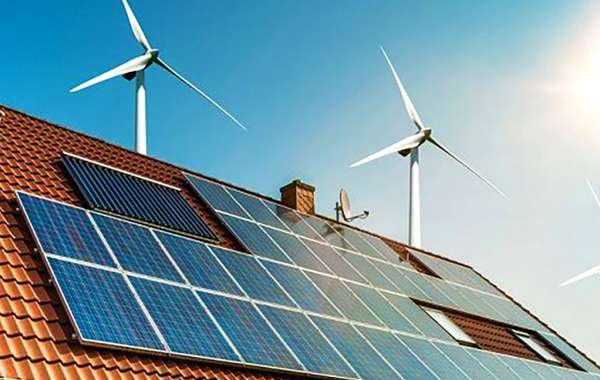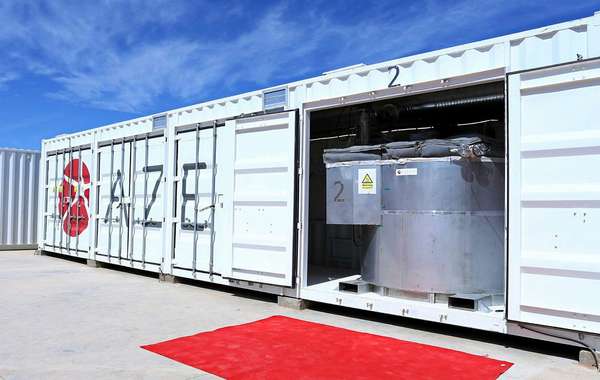Mitigating climate change at home, get on your bike!
As we look for ways to mitigate climate change, improving home energy efficiency and decentralising power generation is something we can do to reduce our personal energy consumption and carbon footprint. Theoretically then moving towards home solar, wind power and even bicycle generators can make for a more efficient home, as you rely less on grid-fed power.
Even in the greenest province or state with renewable energy there is still a significant amount of GHG emissions (greenhouse gases) due to consumption, as even hydrolectric installations damage the environment and release methane.
You could literally drive yourself nuts if you over-analyse your every move in terms protecting the environment and reducing your climate impact, so when we stumble across a cool tech gadget that is an easy way to be eco-friendly, and looks like fun too, then we love passing it along. Hence this post on the bicycle generator - rather than drive to a gym to get your exercise, how about having a pedal-powered phone charger at home?
Pedal powered electricity generation
Talk about a way to ease any device-time guilt - power your TV and devices by cycling! As a parent that struggles with device time and kids too, I quite like the idea of teaching kids about climate change and energy efficiency by making them pedal-charge their devices. The effort expended puts energy use into perspective and may just encourage them not to take their device time for granted.
As Manoj Bhargava, the founder of The Hans Free Electric™ bike, shares in the video above, it is possible to generate electricity at home while simply doing a daily workout routine - sounds like the perfect way to do our bit to reverse climate change!
How does the bike powered generator work?
When you pedal the bike, that action drives a flywheel which turns a generator and charges a battery. A high-efficiency house (with LEDs for example) could possibly meet its basic lighting and powering needs. Other solutions would of course be required for efficient water heating, cooking and heating but hey, it's a start!
Bhargava and his team developed this bicycle generator to take advantage of the mechanical energy created by humans to solve some of the world’s most pervasive problems, namely bringing power to the developing world while mitigating climate change.
“Everything requires energy. Energy is the great equaliser,” says Bhargava, adding that over half of the world’s population have no access to electricity or access to electricity for two or three hours per day.
Having access to clean, free energy will enable poverty-stricken communities to not only light their homes but to connect to the internet. Bhargava says the reason the majority of those who are poor stay poor is because they have no power. He aims to fix this with the The Hans Free Electric™ bike.
One bicycle could potentially provide a small village with electricity if each household spends on hour per day pedaling the bike, and in such an environment where power is a more precious commodity, finding a willing cyclist would probably be easy to find 24 hours a day.
In developed nations, the bike could also be utilized to cut energy costs and remedy the obesity crisis at the same time.
The bicycle is also a clean way to generate power. As Bhargava says himself, if half of the world uses a The Hans Free Electric™ bike, half of the world would be using eco-friendly energy
Manoj’s plan was to distribute 10,000 of the bicycles in India. In addition, he pledged 90% of his wealth to charity and research, you can find an update on the Manoj Bhargava Hans Free Electric™ bike project here.
So was the power your house with a bike idea debunked then?
So, if the price was right, would you use a bicycle generator? By all means let us know, and we do fully expect there to be a few nay-sayers to this idea, as it would be very difficult to power a standard North American code-built house with one given the way we devour energy in our lives, but... just maybe, if you had a home that was able to operate on significantly less energy, something like this could actually start to make a difference.
Looked at in detail, the reality however, is that the bike is designed for very small houses in rural India, and the actual usage is limited to a few very low-powered lightbulbs, possibly occasional use of a small fan, and charging portable devices like phones.
Doing the math: an hour on the bike generates around 0.11 kWh (more or less, depending on how fast you cycle, but probably not much more), and the average North American house uses 30 kWh per day. So, an hour on the bike provides only 0.37% of the energy needed for 24 hours, or approximately enough for five minutes. Oops - that looks like a debunk to us, right there!
So, let's look at the positives as we look how to reverse climate change, we all know we need to excercise more but it's often hard to pull ourselves away from our devices to do so. What if your device required pedalling to operate? Just sayin'...
Now you know more about renewable energy generation. Learn more about sustainable living and building in the Ecohome Green Building Guide and on these pages below :
Learn more about the benefits of a free Ecohome Network Membership here. |






























130 watt-hours is enough for...10 hours on an OLPC laptop? Lighted keyboard maybe. It's missing the gamification of picking bugs out of crops, but it does have the charm of something soon to be encrusted in salt.
Ah, some changes and delay (look for shipping past the first hundreds in 2017, sez;) yes a chain case, but it was because of catching sari rather than legs etc. on the flywheel, and it's smaller because women aren't yet literally the tallest in the house.
I wanted to know if the seat stays comfy and cool...the bikes at the gym have 4 kinds of balance handicap and it's not visibly a part of this setup. I love how there was no unit on the wattmeter in the video, so it looks like his heart rate went up to 238 with him smiling and feeling casual.
Wouldn't it be smarter to convert pedaling into mechanical energy?
Matthew, you're stupid, don't reply to a question like that. There is a huge amount of research into Triboelectric Nanogenerators and put it this every single bit of energy we recover from our activities is energy from our bodies, the more offset the less we need to produce through power stations. @amazing powers, keep thinking and never let anyone tell you it's a stupid idea until you've proved/disproved it.
not a stupid idea; I thought about a heatpump like is used in car aircons. it can be used for heating
What do you mean?
30kWh that is 900 kWh in 30 days. That depend`s where you are living. I don`t consume that much even in the winter. That is way to much! But the ideea is that the bicycle is not still reliebal in that department.
My thoughts exactly buddy.
Average home in UK is for load assessment to energy providers is 3.3kWh/5kWh taking into account diversity etc.
exaclty what i thought from a quick google search of the average usage of houses in Ireland I got 14kwh and 0.11 of kwh from an hour of cycling you would get 0.79% from an hour, that's almost a 1% of your bill saved that would add up and to be honest I think would be a good start things. even tho it's not a lot I feel like a company that is transparent with the amount you save would open a niche market to ppl who can afford installation and value that difference.
"North American house uses average 30 kWh per day" you took the extreme of totally oblivious citizens who use tons of freezers and air conditioners! A conscious citizen consumes on average 3kWh per day and a green citizen consumes probably much less. this bike are "cool" but not productive enough compared to kitchen biomass hydro electric.
"According to the most recent data from the United States Energy Information Administration, the average American household consumes 10,800 kilowatt-hours (kWh) of electricity a year. That translates to approximately 900 kWh a month and 30 kWh per day."